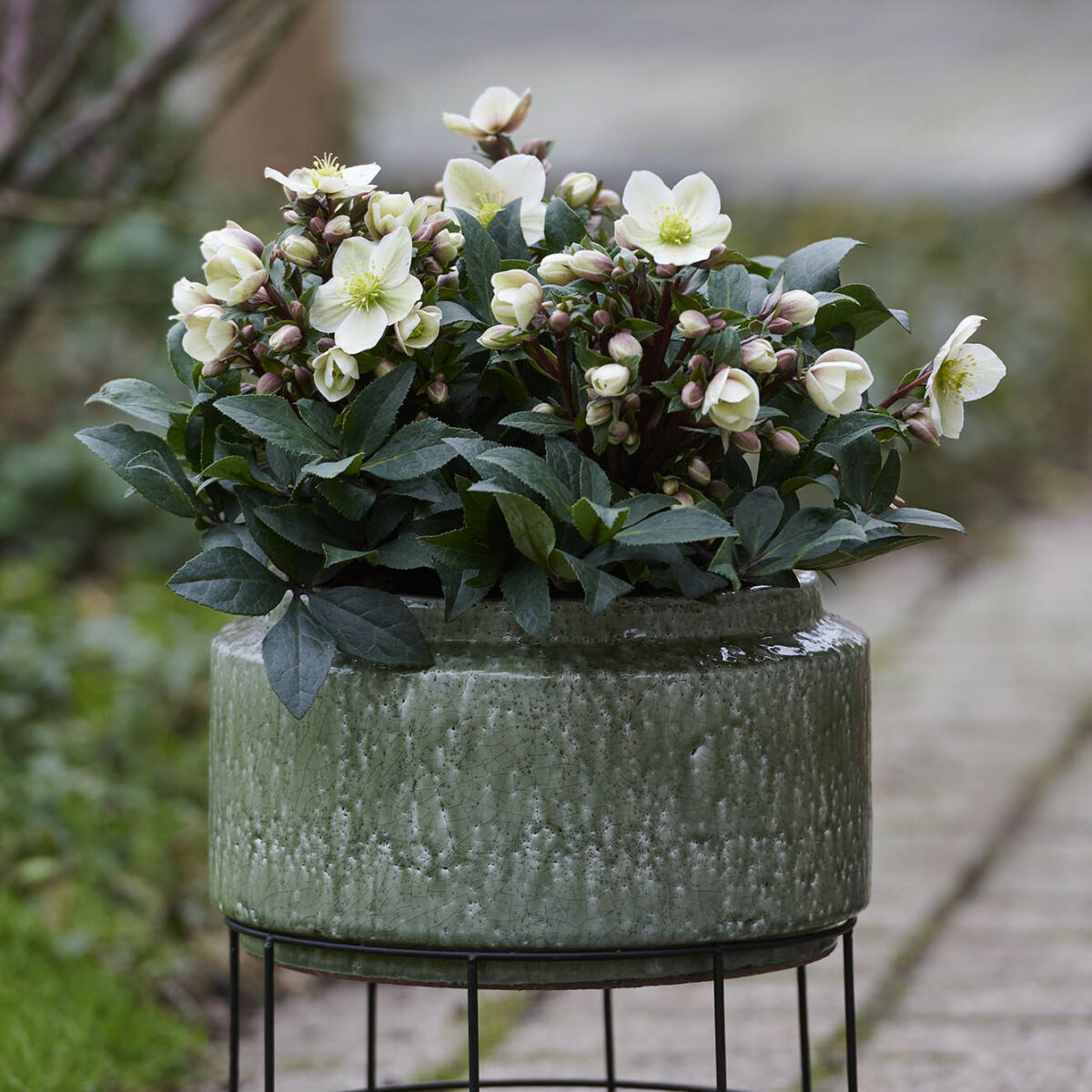Place
The ViV® Hellebore is a garden/patio plant and – even if it is very cold – it likes to be outside. A Hellebore has an ingenious system to protect itself against frost: if it starts to freeze, the plant temporarily pumps the moisture from the flowers to its leaves and roots. This causes the flowers to lie completely flat. As soon as the temperature rises back above 0°C, the moisture is pumped back into the flowers and your Hellebore will look radiant again!
The ViV® Hellebore prefers a slightly shady spot, under high deciduous trees or shrubs.
Water
A ViV® Hellebore that is on the patio during winter must be watered at least 1x a week. The plant cannot freeze but it can dry out (freeze-dry).
Fertilize
Fertilize every year in the spring and autumn with a calcicole fertilizer (Hellebore fertilizer).
Planting
The best time to plant the ViV® Hellebore is in the autumn and early spring, from mid-September to mid-March.
Soil
The ViV® Hellebore prefers a limy, moist but well drained soil with lots of humus. Leaf mould, compost or mature manure are worked into the soil before planting. In heavy soil this can be supplemented by coarse gravel or rubble. It is advisable to work Hellebore fertilizer into the soil in the hole. Dig a hole that is 30 by 30cm. Do not plant the Hellebore too deep. Water profusely after planting.
Care
The ViV® Hellebore usually loses some of its leaves when the bud grows. This happens around October/November. A few leaves will become brown; they can be cut off.
Any black stains on the leaves are caused by the fungus Coniothyrium hellebori, that can spread really fast especially in wet weather. It suffices to cut off the leaves affected.
The ViV® Hellebore can also be susceptible to aphids. The solution? Spray a solution of water and detergent onto the leaves affected.
